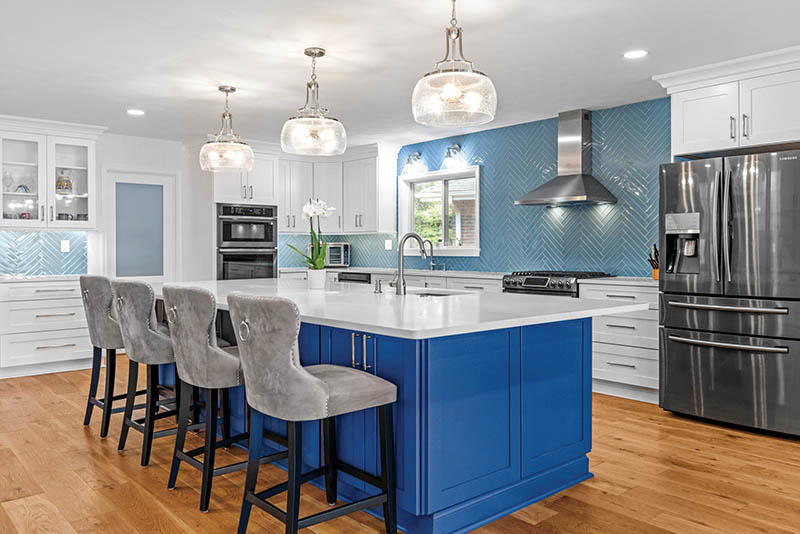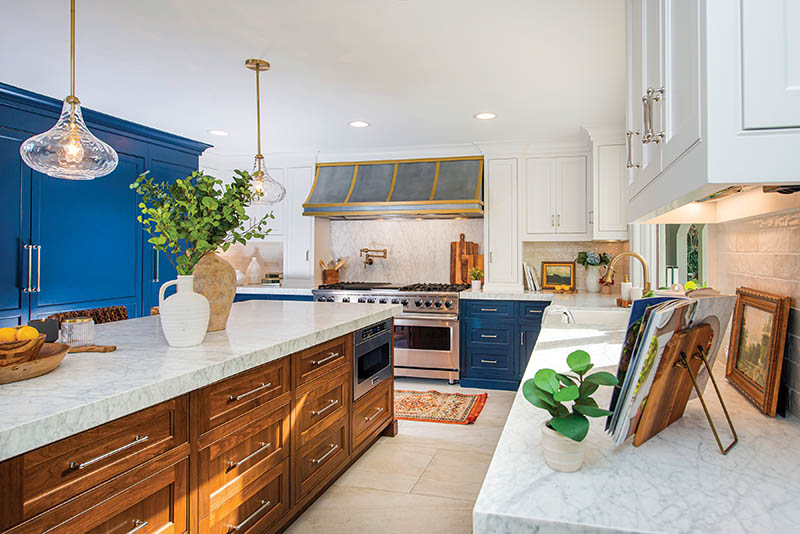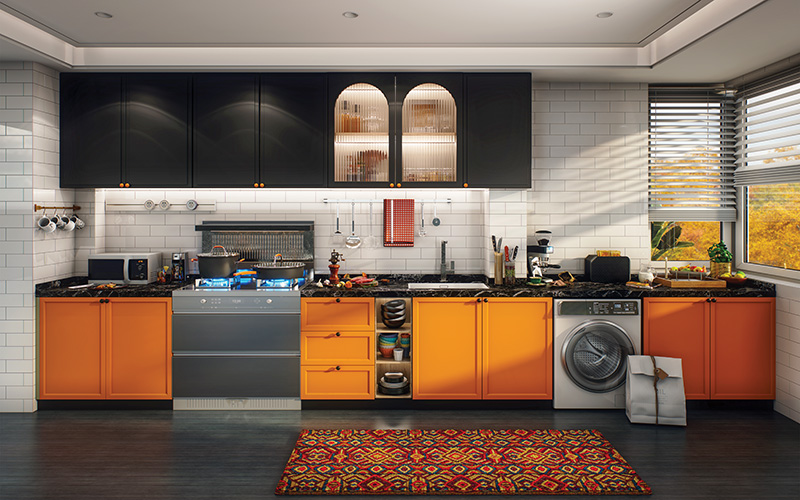Photo Finishes
Thinking about replacing or refurbishing your kitchen cabinets? Here is a designer’s guide to finish types, colors, and combos
By Jaime Simpson
I could happily discuss cabinets all day. There is just so much to love about them! Cabinets provide storage, allow for a higher level of organization and make items easier to access (especially with inserts and gadgets).
And that is just the functionality. There is a plethora of style and finish options available to put the icing on the cabinet cake.
The main finish options for cabinetry are stained, painted or laminated. Metal cabinet doors are increasing in prominence as well, especially for outdoor kitchen spaces.
Stained cabinetry is available in many wood species and in many colors. Warm, cool, light, medium and dark stains can be achieved depending on the preferred look. Most cabinet manufacturers offer paint colors in white, grey, blue and an off white/cream/ecru look. Other colors are available depending on the customization options, while fully custom cabinetry has no limit on paint color options.
Laminated cabinet doors are typically constructed of a plywood core with a laminated surface; these laminates can offer a modern wood grain look, texture or high gloss effect that cannot be easily achieved with wood or paint.
Each finish type has its own beauty and glory. Though one finish and color throughout a kitchen space is lovely and can be a timeless look, you don’t have to choose just one.
Here I have included some thoughts about how to approach using one or more finishes and colors.
One Cabinet Finish/Color / Top Photo Courtesy of Accent Kitchens, Photo By David Uhrin
- Use this option if you are looking for a classic and streamlined look.
- Consider pattern or texture in the countertop and backsplash to provide interest.
- Choose flooring that provides contrast with the cabinetry.
Two Cabinet Finishes/Colors
- Start with one main finish—whether stain, paint or laminate.
- Use the second finish/color as an accent or highlight—perhaps the island, base cabinetry, or tall cabinetry.
- Look for a backsplash or countertop that can unify the two finishes.
- Find a flooring option that can still contrast both cabinet finish options.

Three Cabinet Finishes/Colors
- Start with one main finish in this case as well. Use the second finish as a more prominent accent, and the third finish in smaller doses.
- Stay more subdued with the countertop and backsplash patterns so the various elements don’t compete.
- Find flooring with minimal pattern, and that coordinates with the third finish.
- For example, the base and wall cabinetry are the main finish (a white paint) the island and range hood are the second finish (a sage green paint), and floating shelves are a third finish (a walnut stain).

Four Cabinet Finishes/Colors
This is where it gets really fun.
- If you love eclectic and maximalist styles, don’t be afraid to mix it up.
- Contrast is the key here—ensure that all the finish tones are clearly different and defined to maintain the presence of each.
- For example, the base cabinets could be one paint finish (blue), the wall cabinets another paint finish (white), the range hood could be a third paint finish (black), and the island cabinetry could be a contemporary wood-grain laminate (zebra wood).
